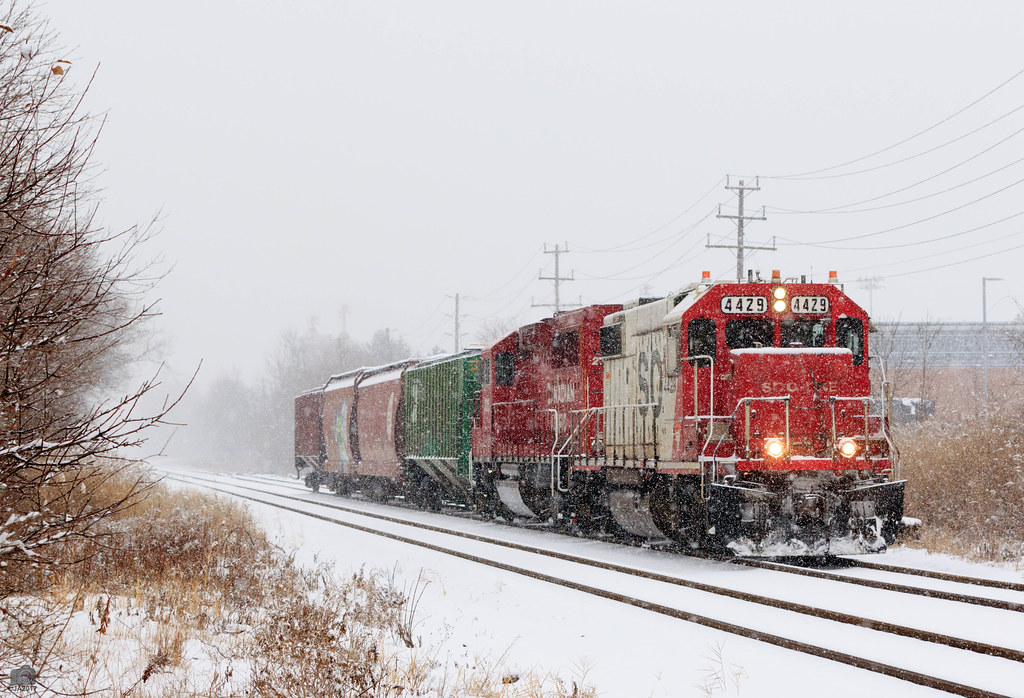 |
| The lawn sign of Hymopack, an industry that manufactures plastic merchandise bags and will soon be represented on the West Toronto Junction. |
The Prototype
In an earlier post, I'd mentioned the process of modelling Korex, a large industry that takes rail deliveries of plastic pellets in covered hoppers. The industry I'm modelling now, Hymopack, also takes plastic pellet hoppers. Located on Medulla Avenue in Etobicoke, Hymopack makes merchandise bags for retail stores. According to their website, the company's clients include Home Depot, and other retail stores such as Canadian Tire and The Beer Store.Interestingly, there's another rail-served plastics plant on the main spur I model: Polytainers. There they turn plastic pellets into containers you find at the grocery store, the kind that hold everything from Hummus to ice cream. I'm not modelling Polytainers but it's interesting that three rail-served plastics facilities are located fairly close together in one area of Etobicoke (West Toronto).
The Building
 |
| This is the exterior of Hymopak. It's the brown brick building on the left with metal cladding. You can see the tops of the white tanks above the yellow brick building on the right. |
Hymopack operates out of a brick building with metal cladding, typical of modern industries. The spur that serves the building descends southward from the CP east-west mainline and curves west into the back of the building. The hoppers are unloaded into a series of at least 10 large storage tanks. The tanks are placed well back of the street.
You can see the aerial view below. Medulla Ave. is visible at the left:
Obviously this industry is too big to model to scale. When I'm aiming for here is something that captures the look and feel of this industry. At a train show recently I picked up a preowned (but still unbuilt) Walthers Plastic Pellet Transfer kit.
Here's what image from the kit's box:
 |
| Tanks from this Walthers Plastic Pellet Transfer kit look almost identical to the ones in use at the industry I'm modelling. |
 |
| Here's a shot of the top of the tanks at Hymopack. This is as close as I could get to the tanks without trespassing! |
This kit features four silos almost identical to the ones in use at Hymopack. They are white, appear to have a similar proportions, are connected by overhead walkways and have cage ladders for access.
My plan is to combine these four silos with a brick building flat set against the backdrop. The spur that will serve this industry is located in the southwest corner of my basement. Now I realize that I'll have far fewer tanks thank the prototype industry. For anyone planning to play 'spot the differences" I'll just say that I'm trying to capture the general "look and feel" of the prototype, not build a flawless scale replica of it. If I ever come across a second Plastic Pellet Transfer kit maybe I'll add more tanks. Foor now, I'll just stick to an array of four tanks.
One interesting thing about the Hymopack tanks is that the two closest to the road have the company's logo painted on them. I plan to do the same on the model.
More on that process in the next post. I will also show how I'm scratch-building the structure itself.


